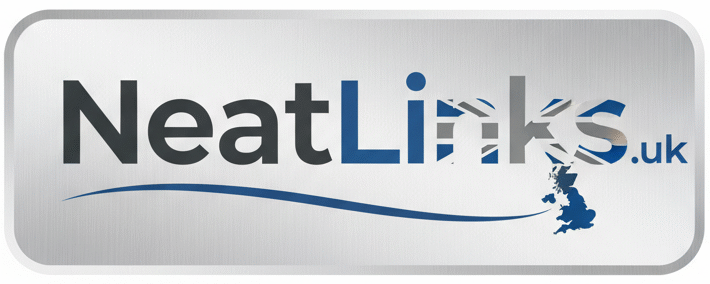Mindfulness in the Workplace: A Comprehensive Overview

Introduction to Mindfulness in the Workplace
Mindfulness in the workplace is the practice of paying attention to the present moment without judgment while at work. It involves focusing on your thoughts, feelings, bodily sensations, and surrounding environment without getting carried away by them. In everyday terms, it’s about being fully present and engaged in what you’re doing, reading an email, running a meeting, writing a proposal, rather than multitasking, worrying about the future, or dwelling on the past. Far from being “just breathing,” mindfulness is a practical mental skill set that helps you show up with clarity, steadiness, and a kinder inner voice, even when things get hectic.
Why mindfulness matters at work (and not just in theory)
Modern work is noisy: constant notifications, tight deadlines, hybrid schedules, and overlapping responsibilities. Our attention is fragmented, and our stress response is often running hot. Mindfulness helps you regain agency over your focus and energy so you can do less firefighting and more meaningful work. Here’s how those benefits play out in real workplaces:
- Reduced stress and anxiety: By learning to observe thoughts and feelings without judgment, “There’s worry,” rather than “I am worried”, you create a bit of breathing room. That space helps your nervous system settle, which makes it easier to respond thoughtfully rather than react impulsively. Over time, you’re less rattled by the same triggers.
- Improved focus and concentration: Attention is a trainable capacity. Short, frequent moments of practice strengthen your ability to stay with one task and resist the dopamine itch to check messages every two minutes. The result? Deeper work, fewer mistakes, and less cognitive fatigue.
- Enhanced emotional regulation: Mindfulness makes emotions more legible. You notice signals earlier (tight jaw, shallow breath, impatient tone) and can steer the conversation or your own behaviour before it derails. Teams with more emotional regulation tend to have clearer communication and fewer simmering resentments.
- Increased creativity and innovation: When mental chatter quiets down, you access a wider perspective. Mindfulness doesn’t force ideas; it clears the fog so patterns and connections become visible. Many people report their freshest thinking after a brief pause, a walk, or a mindful reset.
- Better decision-making: A steady mind sees options more clearly. Mindfulness helps you distinguish signal from noise, check assumptions, and make choices based on values and data rather than stress or bias.
- Improved communication and collaboration: Mindfulness fuels active listening, really taking in what someone says without composing your rebuttal. That makes meetings shorter and outcomes better. It also supports empathy, which reduces defensiveness and increases trust.
- Higher job satisfaction and lower burnout: When people feel they have tools to steady themselves, their sense of efficacy rises. That’s energising. Mindfulness also normalises self-care (micro-breaks, boundaries), which protects against chronic overload.
- Stronger leadership: Mindful leaders tend to be calmer in crises, clearer in direction, and more human in their relationships. They model presence and psychological safety, making it easier for teams to do their best work.
How to implement mindfulness at work
You don’t need meditation cushions in every meeting room to get started. Aim for practical, inclusive, opt-in practices that meet people where they are.
- Run a pilot program: Begin with a small, motivated group across departments. Offer a four to eight-week series (30–45 minutes weekly) covering basics: breath awareness, body scan, mindful communication, and stress physiology. Collect pre- and post-feedback to learn what lands.
- Offer multiple entry points: Not everyone wants a class. Provide short recorded practices, a written “quick start” guide, optional drop-in sessions, and one-minute micro-practices people can do at their desk.
- Integrate into the day, not just after hours: Encourage 60–120-second pauses before big meetings, at the start of focus blocks, or after difficult calls. Normalise stepping away for a breath break the same way you would refill your water.
- Mindful meetings: Start with 60 seconds of quiet arrival, or invite three slow breaths. During the meeting, agree to a single-threaded conversation (one speaker at a time) and generous listening. End with a 30-second recap so action items land clearly.
- Mindful communication training: Teach techniques like “mirror and check” (reflect what you heard, ask if you got it right), non-judgmental language (“I notice…” vs. “You always…”), and the pause before reply. Role-play tough scenarios.
- Create a quiet space: A small room or corner where people can decompress, stretch, or sit quietly for five minutes. Keep it simple: a chair, soft lighting, a sign that signals “in use.”
- Mindful movement options: Short guided stretches, chair yoga, or a five-minute walking circuit map in the office. Movement helps people who find seated practice difficult.
- Lead by example: Leaders who take brief pauses, end meetings on time, and protect focus blocks give everyone permission to do the same.
- Embed in culture and systems: Add a “mindful minute” prompt to meeting agendas, include focus-time norms in team charters, and design workflows that reduce unnecessary interruptions.
- Offer resources: Provide a curated set of articles, printable practice cards, and an FAQ for sceptics (e.g., “Is mindfulness a religious practice?” “What if I can’t sit still?”).
Practical mindfulness techniques you can use today
Think of these as tools in a small, portable kit. Use what works; leave the rest.
- Breath awareness (2–3 minutes): Sit upright. Notice the sensation of breathing, air at the nostrils, and the belly rising and falling. When the mind wanders (it will), gently bring it back to the next breath. One minute is enough to feel a shift.
- Box breathing (4-4-4-4): Inhale for 4, hold 4, exhale 4, hold 4. Repeat four rounds before a presentation or a delicate conversation.
- Body scan (3–10 minutes): Move attention from toes to head. Notice sensations, pressure, temperature, tingling, without trying to change them. Great for resetting after long desk time.
- Walking meditation (2–5 minutes): On the way to your next meeting, feel your feet contact the ground, the shifting of weight, the swing of your arms. Let the walk be your whole focus.
- Mindful email: Before you hit send, take one breath. Read the message as the recipient. Is the tone clear? Is there anything unnecessary or emotionally loaded? Adjust. Then send.
- Mindful transitions: Between tasks, close your eyes, take three slow breaths, and ask: “What matters most in the next block?” Name it. Begin fresh.
- Mindful listening: During one conversation today, commit to not interrupting. Reflect back one key point you heard: “What I’m hearing is…” Watch the temperature of the discussion drop.
- Gratitude practice (30–60 seconds): Write down one specific thing from today you’re grateful for (“Sam’s clear summary in the stand-up,” “the quiet at 8:30 a.m.”). Specificity trains your attention toward resources, not just problems.
- RAIN for difficult emotions (Recognize, Allow, Investigate, Nurture): Recognize what’s here (“frustration”), allow it to be present (“this is here right now”), investigate where you feel it in the body (jaw, chest), and nurture with a kind phrase (“It’s okay to feel this”). Then proceed.
- The STOP micro-pause: Stop, Take a breath, Observe (thoughts, feelings, body, surroundings), Proceed with intention. 20 seconds is enough.
- Labelling emotions: Name what you notice: “I’m feeling overwhelmed.” Labelling reduces intensity and increases choice.
- 90-second rule: Strong emotions often surge and settle within about a minute and a half if you don’t re-fuel them with ruminative thoughts. Breathe and ride the wave.
- Screen-soothe protocol: Every 20 minutes, look 20 feet away for 20 seconds; roll shoulders; take one breath. Eyes, neck, and mind will thank you.
Tailoring mindfulness to different work settings
- Open-plan offices: Use noise-management strategies (headphones, agreed-upon “library hours”) and short collective arrival breaths before team huddles.
- Remote and hybrid teams: Begin virtual meetings with 30 seconds of silence to reduce Zoom-rush. Encourage camera-off walking 1:1s. Protect shared focus blocks across time zones.
- Frontline roles (retail, healthcare, service): Micro-pauses between customer interactions: one breath and a shoulder roll. Teach “arrive-reset-serve” as a simple mantra.
- Shift workers: Short practices at shift handover reduce errors and tension. A two-minute body scan before sleep helps downshift after late nights.
Common challenges (and how to handle them)
- Resistance and scepticism: Normalise resistance. Offer plain-language explanations and emphasise choice. Invite people to try a single two-minute practice for one week and see if it helps.
- Time constraints: Keep it tiny. One-minute practices embedded in the workflow are better than 30 minutes that never happen. Tie practices to existing cues (log-in, before calls, after lunch).
- Privacy concerns: Offer solo options (recordings, written guides). Avoid check-ins that pressure people to disclose personal feelings. Make participation opt-in and confidential.
- Trauma-sensitive approach: For some, closing eyes or focusing on the body can be activating. Always invite eyes open, movement, or focusing on external anchors (sounds, a point on the wall). Choice is essential.
- Cultural fit: Frame mindfulness as performance hygiene and human sustainability, not a cure-all. Pair it with healthy workload management, realistic deadlines, and fair policies. Mindfulness complements good management; it doesn’t replace it.
- Sustainability: Treat mindfulness like fitness: small, regular sessions beat one big burst. Rotate facilitators, refresh content, and keep practices varied (breath, movement, gratitude, focus hygiene).
Measuring success without making it feel like a test
Decide what you care about, measure it simply, and look for trendlines rather than instant transformation.
- Quantitative indicators: Short pulse surveys (2–4 questions) on stress, focus, and team climate; retention and sick-day trends; meeting length and number; time-blocking adherence.
- Qualitative signals: Manager and employee anecdotes; meeting feedback (“the 60-second arrival makes us sharper”); Slack tone; fewer “reply-all” storms.
- Sample survey items (1–5 scale):
“I can regain focus after interruptions.”
“I have tools to manage stress at work.”
“Our team meetings start focused.”
“My workload feels more manageable recently.” - Before-and-after experiments: Run a four-week pilot with three short practices embedded in typical workflows (e.g., arrival breath, STOP before email, mindful transitions). Compare pre/post-stress and focus ratings and capture one story per participant.
A 30-day rollout plan (simple and realistic)
- Week 1 – Awareness:
Announce the pilot. Share a one-page guide and two 3-minute audio practices. Leaders model a 60-second arrival in key meetings. - Week 2 – Skills:
Offer one 30-minute live session covering breath, STOP, and mindful email. Encourage one micro-pause per day. Start a voluntary 7-day “one minute at 1” challenge. - Week 3 – Integration:
Add mindful transitions between tasks and a weekly walking 1:1 experiment. Create a quiet space (even a corner with a chair). Celebrate small wins in team channels. - Week 4 – Sustain:
Gather feedback. Adjust what didn’t land. Publish a “menu of micro-practices” and add a 60-second arrival as a standing agenda item for key meetings. Decide on next steps (monthly refreshers, peer champions).
Mistakes to avoid
- Making it mandatory: Compulsion kills buy-in. Keep it invitational and varied.
- Overselling: Mindfulness won’t fix broken processes or unfair workloads. Pair it with sensible operational changes.
- One-and-done workshops: Skills fade without reinforcement. Sprinkle practices into daily rhythms.
- Ignoring accessibility: Offer eyes-open options, movement alternatives, captions for recordings, and neurodiversity-friendly guidance (e.g., external anchors instead of internal sensations).
- Measuring only vanity metrics: Track what actually matters to your teams, clarity in meetings, reduced rework, calmer handovers, not just attendance.
Quick start: a personal routine you can try tomorrow
- Arrival (30–60 seconds): Before you open your laptop, take three slow breaths. Ask: “What matters most this morning?” Write it down.
- Pre-meeting pause (30 seconds): One breath to arrive; state the meeting purpose in one sentence.
- Midday reset (2 minutes): Body scan from feet to head at your desk; unclench jaw and hands.
- Mindful email (30 seconds): Breath, read as recipient, tweak tone, send.
- Transition to home (1 minute): Close the day with three breaths and note one win and one kind thing you did.
Conclusion
Mindfulness is not about becoming a perfect, perpetually calm person. It’s about cultivating a steadier attention, a kinder inner stance, and a little more room to choose your response, especially when pressure rises. In the workplace, that translates into clearer thinking, better teamwork, more humane leadership, and a healthier pulse to the day. Start small, keep it practical, and make it normal to pause. Over weeks and months, those tiny choices compound into a culture where people can do great work without burning out and where the work itself benefits from the clarity and creativity that only a present mind can bring.
FAQs for Mindfulness in the Workplace
What is mindfulness in the workplace?
It’s the skill of paying attention on purpose and without judgment to the task, people, and signals in front of you so you can respond thoughtfully instead of reacting on autopilot.
Is mindfulness religious?
No. Workplace mindfulness is a secular, skills-based practice focused on attention, awareness, and self-regulation.
How much time does it take?
Small doses work. One to three minutes before meetings, during task switches, or after difficult calls can meaningfully reduce stress and improve focus.
What are quick practices I can do at my desk?
Try the STOP pause (Stop, Take a breath, Observe, Proceed), box breathing (4-4-4-4), a 60-second body scan, or one mindful email check before sending.
How can leaders support mindfulness without making it awkward?
Model brief arrival breaths, protect focus blocks, end meetings on time, and keep participation optional. Normalise pauses as performance hygiene.
Will mindfulness fix burnout by itself?
No. It helps with regulation and clarity, but it must sit alongside fair workloads, realistic deadlines, and supportive management.
How do we measure impact?
Use short pulse surveys on stress/focus, track meeting quality (clarity, duration), retention and sick days, and collect brief anecdotes from teams.
What about people who find closing their eyes uncomfortable?
Offer eyes-open options, external anchors (sounds, a point on the wall), and movement-based practices like mindful walking or stretching.
Can this work for remote or hybrid teams?
Yes. Start virtual meetings with a 30-second arrival, schedule shared focus windows, and encourage camera-off walking 1:1s.
Do we need an app?
Apps can help, but aren’t required. A few well-taught micro-practices, a quiet space, and supportive norms are enough to start.




